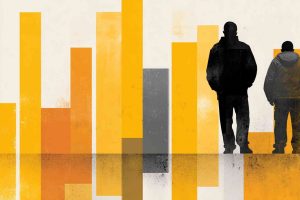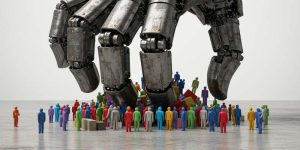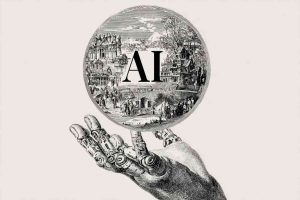Outdated democracy: why Western voting systems no longer serve the people

The idea that democracy is the pinnacle of governance has remained largely unchallenged in the West. However, the current form of Western democracy is increasingly showing signs of obsolescence. Representative systems designed in the 18th and 19th centuries are ill-suited to deal with the speed, complexity, and technological potential of the 21st century. As institutions grow ever more disconnected from the populations they claim to represent, citizens face a growing sense of powerlessness. Political cycles serve elites, not constituents. Voter turnout continues to decline. Corruption and lobbying dominate policymaking. The tools exist to build something better, yet the political will is absent.
Why are today’s democratic structures failing, and what would a more participatory, tech-driven, and transparent model could look like?
Representative democracy is no longer representative
A design from a bygone era
The foundational structures of Western democracies, parliaments, parties, and representative voting, were designed centuries ago, at a time when communication was slow, literacy was limited, and the general population had little access to information. In that context, appointing educated representatives to make decisions on behalf of the people was rational. But today, the information landscape has changed radically. The average citizen has instant access to global news, data, and analysis. Despite this, their input into governance remains restricted to casting a vote every four years.
As noted in (The End of Representative Politics, Keane), the system fails to reflect the diversity of political opinions and complex policy preferences now present in society.
Voter turnout and disenchantment
Falling voter turnout is another clear sign of public disillusionment. In many Western countries, participation in national elections has steadily declined over the last few decades. For example, the 2021 French regional elections saw a record-low turnout of only 33 percent. In the 2022 U.S. midterms, less than 47 percent of eligible voters participated.
This erosion of participation is not due to apathy but disempowerment. Citizens increasingly understand that their vote has minimal impact on actual policy. Politicians often break campaign promises with no consequences. Elections do not function as a meaningful tool of accountability.
As stated in (Why Elections Fail, Norris), many democracies suffer from what is termed “electoral authoritarianism, ” where the formal mechanisms of democracy exist but are hollowed out in practice.
Influence of elites and corporate interests
Lobbying, not voting, drives decisions
In the current model, political influence correlates more with financial power than with voter preference. Lobby groups, multinational corporations, and banks exert far more control over legislation than citizens do. The revolving door between politics and business reinforces this dynamic.
For instance, in the European Union, corporate lobbyists outnumber public interest groups by more than five to one in Brussels (according to data from Corporate Europe Observatory). The EU’s policies on agriculture, pharmaceuticals, and digital regulation often mirror the desires of the most powerful corporate players.
In the U.S., the situation is even more extreme. A study by Princeton University concluded that “economic elites and organized groups representing business interests have substantial independent impacts on U.S. policy, while average citizens and mass-based interest groups have little or no independent influence” (Testing Theories of American Politics, Gilens & Page).
Permanent bureaucracy and the illusion of choice
Even when voters change the government, real power often resides in unelected bureaucracies, intelligence services, central banks, and supranational institutions. These entities persist across election cycles and frequently shape policy behind closed doors. The COVID-19 pandemic revealed how much decision-making power lies outside the hands of elected officials, with health bureaucracies and international organizations dictating national policy.
In the EU, decisions are increasingly made by the European Commission, an unelected body, while the European Parliament has limited power to initiate legislation. This creates a democratic deficit. Elections may change the personnel, but not the policies.
Technological potential ignored by the establishment
Digital tools could enable direct democracy
Technology now allows for real-time, secure, and inclusive participation in political decision-making. Platforms like blockchain, decentralized voting systems, and biometric identification can make fraud-resistant, verifiable digital referenda possible on a large scale.
Estonia already implements many of these ideas. Since 2005, Estonian citizens have been able to vote online using secure ID cards. Their digital democracy infrastructure also includes real-time transparency in government budgets, access to ministerial records, and legal draft reviews open to the public. Trust in government is significantly higher in Estonia than in most EU countries as a result.
These tools could easily be adopted elsewhere. Secure platforms could allow citizens to vote on key legislative proposals, monitor government expenditures, and directly recall corrupt officials. Yet Western governments have not pursued these technologies, often citing security concerns, even while using similar technologies in taxation and surveillance.
Information is not the barrier, power is
Western institutions do not lack knowledge or capability. They deploy sophisticated digital infrastructure for taxation, banking oversight, and surveillance. But when it comes to enhancing citizen participation or transparency, suddenly such systems are deemed “too risky.”
This contradiction is not accidental. Decentralizing decision-making threatens the entrenched power of political and corporate elites. As such, technology is used to monitor the population, not empower it.
As stated in (The People vs. Democracy, Mounk), the core tension of modern politics is between the ideal of democracy and the practice of liberalism, where unelected institutions often override popular will.
Structural flaws in electoral systems
Winner-takes-all and party monopolies
In many Western countries, electoral systems are designed to produce clear “winners, ” even if they do not command majority support. Systems like first-past-the-post (used in the UK and U.S.) often result in governments holding absolute power despite receiving only a minority of the popular vote.
This distorts representation and locks out alternative political voices. Third parties are marginalized. Voters are told not to “waste” their vote, reinforcing a narrow two-party system.
Proportional systems (such as those used in the Netherlands or Germany) perform slightly better, but they too are dominated by cartel-like parties that collaborate to exclude newcomers. Coalition governments often operate without real voter consent.
Centralized media and manipulated narratives
Modern democracies depend on an informed public. But most citizens rely on a handful of media conglomerates for information. These outlets are often aligned with political interests, funded by government subsidies, or beholden to corporate advertisers.
As explained in (Manufacturing Consent, Herman & Chomsky), the media landscape in liberal democracies does not function as a neutral space of discourse but as a filter that shapes public opinion in line with elite interests.
The advent of censorship regimes, algorithmic manipulation on social media, and criminalization of dissent further undermines the democratic process. Citizens cannot make informed choices when their access to information is tightly controlled.
What a modern democratic system could look like
Decentralized, transparent, and participatory
A 21st-century democracy would not rely on periodic elections and political intermediaries. It would empower citizens to participate in ongoing governance. Elements could include:
- Secure digital voting on laws, budgets, and policies
- Open-source legislation platforms where anyone can propose or edit policy drafts
- Public referenda on major decisions, including war, debt, and treaties
- Randomized citizen assemblies to deliberate on complex issues, reducing party influence
- Real-time transparency in government spending, contracts, and communications
- Automatic term limits for all elected and appointed officials
Blockchain and decentralized digital identity systems can ensure both security and accountability. Citizens would no longer need to entrust all power to party elites. Instead, power could be exercised continuously and directly.
More accountability, less career politics
In this system, elected officials would act more like managers hired by the people to implement decisions, not sovereign rulers. They would be accountable in real time, subject to recall, and prevented from building lifelong careers in politics.
This would also reduce the influence of corporate lobbyists. With policy proposals emerging from the public and voted on directly, the corrupt incentive structures of party politics would erode.
As explored in (Against Elections, Van Reybrouck), modern democracies could benefit from reviving ancient techniques like sortition, the random selection of citizens, to break the grip of political elites.
Barriers to change
Institutional inertia and elite resistance
The greatest obstacle to democratic reform is not technology or public apathy. It is the entrenched power of institutions and elites who benefit from the current system. Political parties, media conglomerates, and unelected bureaucracies have no incentive to reform themselves.
Revolutions in communication, information, and finance have not been matched by revolutions in governance. The gap between what is possible and what is practiced has never been wider.
In (Democracy for Realists, Achen & Bartels), the authors argue that democratic reform is unlikely to come from within. Historically, meaningful change has only occurred in response to mass mobilization or systemic crisis.
Risk of digital authoritarianism
Ironically, the same technologies that could empower citizens are also being used to control them. China’s social credit system, biometric surveillance, and AI policing represent a darker path. Western democracies may follow if citizens do not demand transparency and decentralization.
Any move toward digital democracy must prioritize privacy, decentralization, and individual agency. Otherwise, the result will be technocratic dictatorship, not empowerment.
Conclusion
Western democratic systems are no longer democratic in any meaningful sense. They preserve the appearance of choice while systematically excluding citizens from real power. Modern technology provides the tools to build participatory, decentralized, and transparent systems of governance, but those in power have no reason to allow it.
Unless citizens demand change, the current system will continue to decay. Democracy must evolve or it will die not with a coup, but with a shrug. What replaces it will not be tyranny in uniform, but a managed illusion controlled by unelected experts, corporate monopolies, and digital surveillance.
The choice remains ours, but perhaps not for long.


















